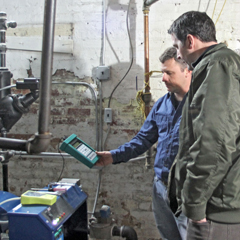
Total Awards: 27.5 Million
Total grants: 39 grants or loans
Duration: 2012-2015
Geographic Focus: United States
Background
In the late 1990s, there was growing concern that the significant portion of subsidized rental homes that were coming to the end of their initial subsidy period would not obtain renewed subsidy and that the amount of affordable rental housing for low and middle-income families in metropolitan areas would fall to even lower numbers. Responding to this escalating concern, the MacArthur Foundation identified preservation of the existing stock of affordable multifamily rental housing as a pressing need. Consequently, the Foundation launched the Window of Opportunity: Preservation of Affordable Rental Housing initiative in 2000. The initiative would expand to become a 20-year effort, during which the Foundation awarded $214 million in grants and loans to a wide range of organizations including non-profit owners of affordable rental housing, state governments, researchers, financial institutions, industry associations, and advocates.
By 2011, the Foundation and its Window of Opportunity borrowers and grantees had increasingly recognized that energy costs of multifamily rental properties could be better controlled. To this end, the Foundation opted to extend Window of Opportunity with an explicit focus on increasing the energy efficiency of subsidized and unsubsidized multifamily affordable housing. Between 2012-2015, the Foundation awarded $27.5 million through 39 grants or loans as a part of what we term the Window of Opportunity - Energy Efficiency. The loans were Program-Related Investments, which were low-interest loans to create new business models or grow mission-oriented businesses. The Window of Opportunity - Energy Efficiency activities comprised a little over 10 percent of the overall $214 million Window of Opportunity initiative.
What We Evaluated
The purpose of the evaluation was to:
- Document and understand how the Foundation’s focus evolved over the course of Window of Opportunity-Energy Efficiency.
- Explain what organizations and activities were funded in Window of Opportunity-Energy Efficiency.
- Identify whether the Window of Opportunity-Energy Efficiency funded organizations and activities had an influence on the intermediate outcome areas.
- Identify strategies in Window of Opportunity-Energy Efficiency that are relevant for other philanthropic initiatives, even those not pertaining to housing.
What We Learned
The evaluation concluded that the focus on energy efficiency within the Window of Opportunity had a positive influence on most of the intermediate outcomes that the Foundation had set out for Window of Opportunity-Energy Efficiency. There were seven intermediates outcomes indicators that were used to determine if the Window of Opportunity-Energy Efficiency was a means towards the end of preserving more affordable rental housing, which was the desired impact of Window of Opportunity at large. These intermediate outcomes were:
Increased awareness of energy efficiency as a tool for preservation
- New and more energy efficiency public policies
- New and more financing practices and vehicles
- Increased cross-sector (e.g., affordable housing and energy efficiency) awareness and collaboration
- Increased share of energy efficiency incentives, subsidies, policies, regulatory reforms
- New data and benchmarking practices and resources
- Increased pace and volume of energy efficiency improvements in affordable rental housing stock.
Beyond assessing what was achieved (or not), the evaluation identified several aspects that worked well and did not work as well.
What worked in Window of Opportunity-Energy Efficiency:
- The Foundation effectively used its convening power to influence organizations that worked across sectors.
- The Window of Opportunity-Energy Efficiency benefited from the networks built through the Window of Opportunity initiative.
- Like Window of Opportunity, Window of Opportunity-Energy Efficiency built the capacity of organizations to secure subsequent loans from commercial banks.
- Foundation staff had enough content knowledge to select effective grantees.
- The focus on Chicago led to a significant and enduring impact of the affordable housing field.
What did not work as well in Window of Opportunity-Energy Efficiency:
- All of the program related investments have not worked as planned. This is not surprising given the intentional risk the Foundation took.
- Grantee funded data and benchmarking activities did not gain wide spread use.
- Only a few energy efficiency programs for affordable multifamily rental housing have gone to scale.
- The savings from energy efficiency can aid preservation but more is needed to keep housing affordable in high cost housing markets.
RAND blog on energy efficiency housing ›
MacArthur's evaluation philosophy ›



